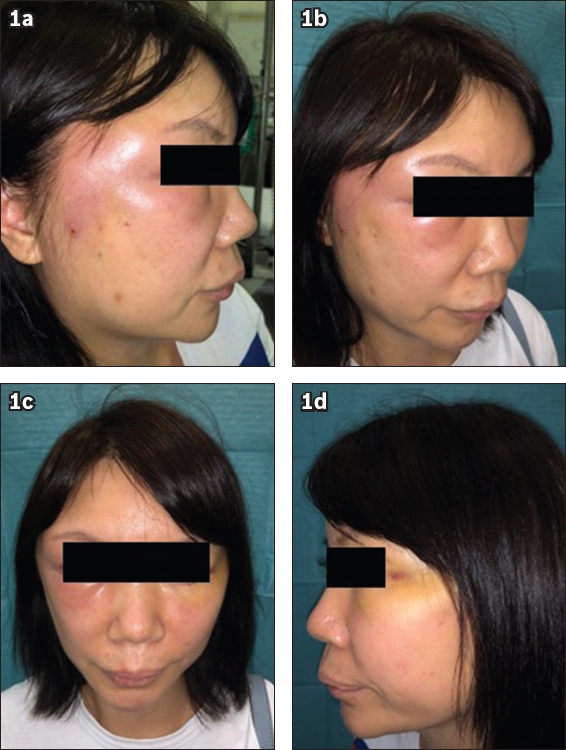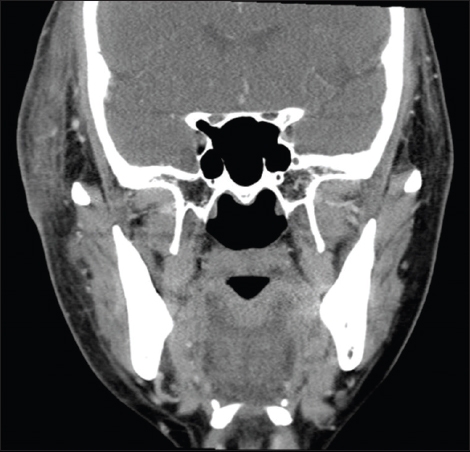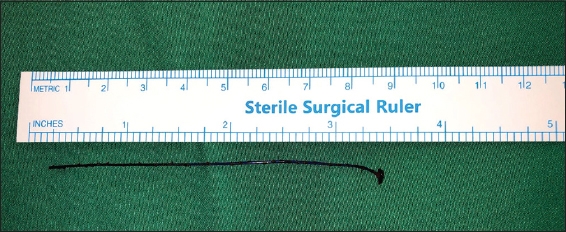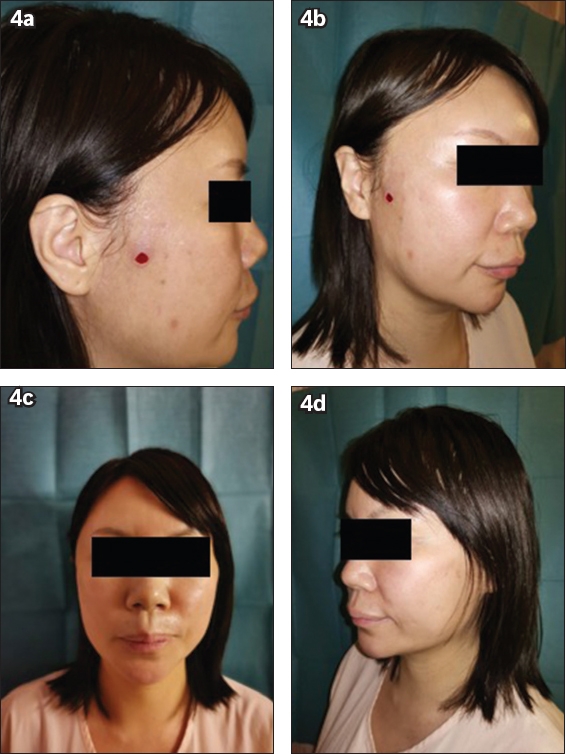Dear Sir,
Minimally invasive techniques for facial rejuvenation are very attractive to patients and physicians. Since the introduction of thread-lift sutures, their application to lifting sagging tissues has spread among many cosmetic practitioners. Thread lifts do not provide as remarkable results as traditional face-lifts, but they offer dramatic results in less time with relative ease of performance. However, there have been reports of complications arising from various thread-lifting procedures, including scarring, nerve damage and delayed thread migration.(1) There is growing concern over complications following this procedure, as it is increasingly performed at beauty salons by non-medical professionals. A search of PubMed® and MEDLINE® with the search terms: ‘thread lift’, ‘threadlift’ and ‘infection’ identified six relevant articles. After accounting for geographic location, there were no comparable results.(2,3) Hence, to our knowledge, this is the first documented facial abscess from thread lift done by a non-medically trained beautician in Southeast Asia, and highlights potential infective complications if a supposedly minimally invasive procedure is done haphazardly.
A 48-year-old Chinese woman presented with right facial pain for three days. She had undergone a thread-lifting procedure by a beautician five days before. Six threads had been inserted bilaterally in a non-sterile environment in her home and without the use of sterile equipment. On further questioning, she did not recall the beautician cleaning her face before the procedure and no gloves were used. She had undergone two similar thread-lifting procedures the year before by various beauticians. On examination, the patient had right periorbital swelling and redness (
Fig. 1
Preoperative photos show the extent of erythema at (a) the right temporal region and (b) the periorbital region. (c) Frontal view and (d) the left cheek views for comparison. The left cheek photo (

Fig. 2
CT image shows the right facial abscess and preseptal cellulitis with superficial extension to the right preseptal periorbital, temporal, periauricular and submandibular region.

Fig. 3
Photograph shows barbed thread retrieved from the wound.

Fig. 4
Postoperative photos show the improvement in swelling and erythema in (a) lateral, (b) oblique, and (c) frontal views. (d) The left cheek is shown for comparison.

About 15 years ago, the United States Food and Drug Administration approved the first thread-lift device as a minimally invasive alternative to traditional rhytidectomy without the larger surgical incisions and prolonged time of recovery. As reported by Obourn and Williams(4) in their analysis of the literature over the past ten years, thread lifts offer limited long-term facial rejuvenation outcomes. The advantages of thread lifts include their ease of use, readily available instrumentation and minimal downtime.(5,6) However, concerns about their long-term safety, efficacy and patient satisfaction have limited their usage. Potential complications include swelling, bruising, thread extrusion, skin dimpling, contour irregularities, alopecia, asymmetry, intractable pain and paraesthesia, foreign body reaction and infection. As the popularity of thread lifting increases, the reported frequency of illegal practices in non-medical facilities has also increased. Shin et al(2) reported a case of Mycobacterium massiliense granulomatous infection following a thread-lift procedure performed at a beauty salon. Principles of sterility apply even in minimally invasive procedures. This report serves as a timely notice to medical professionals to be wary of non-licensed or non-sterile usage of minimally invasive thread lifts, which can lead to undesirable side effects.
Yours sincerely,


